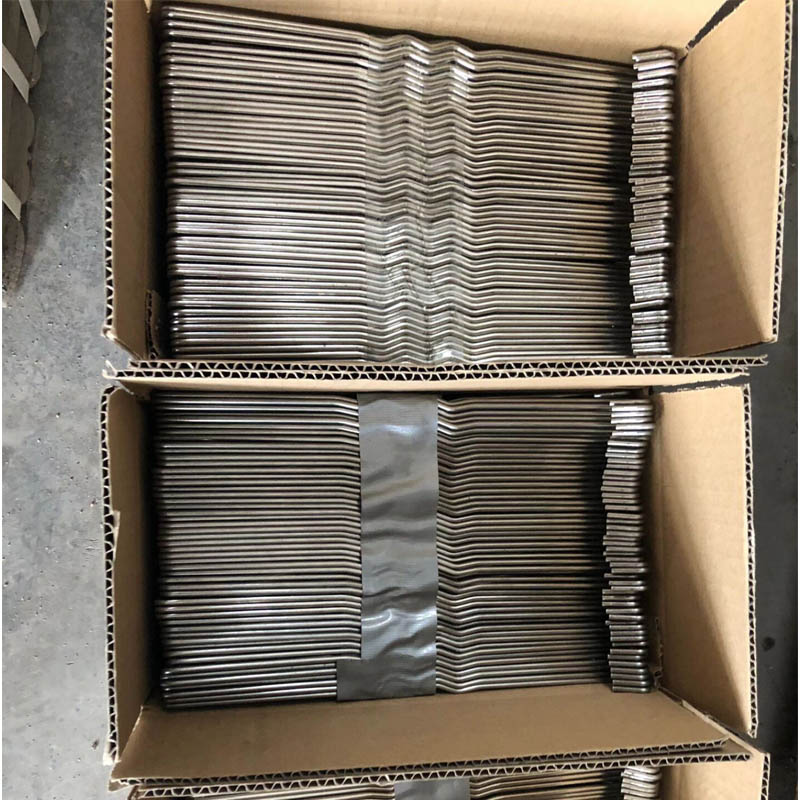
- Mobile Phone
- +8613931874955
- sales@cntcmetal.com
Understanding the Importance of Horizontal Joint Reinforcement in Brick Masonry Construction
The Importance of Horizontal Joint Reinforcement in Masonry Construction
In masonry construction, the integrity and durability of structures rely significantly on the techniques and materials used during assembly. One critical component that enhances the strength and stability of brick masonry is horizontal joint reinforcement. This process involves the strategic placement of metal reinforcements within the horizontal joints of brick layers. This article explores the reasons behind the necessity of horizontal joint reinforcement, its benefits, and its application in modern construction practices.
Understanding Horizontal Joint Reinforcement
Horizontal joint reinforcement consists of metallic rods or mesh that are embedded in the mortar joints of brick walls. Typically made from steel, these reinforcements are designed to improve the performance of masonry walls by enhancing their tensile strength, which is often a limiting factor in traditional brick construction. By providing additional support across the wall, horizontal joint reinforcement helps to ensure that the structure can withstand various stresses, including wind loads, seismic activity, and any settlement that may occur over time.
Benefits of Horizontal Joint Reinforcement
1. Enhanced Structural Integrity Horizontal joint reinforcement significantly improves the structural integrity of brick walls. Masonry is inherently strong in compression but weak in tension. The addition of reinforcement allows the bricks to work together more effectively under various load conditions, significantly reducing the risk of cracking and structural failure.
2. Improved Resistance to Lateral Forces Buildings are often subjected to lateral forces from wind and seismic activity. Horizontal joint reinforcement increases resistance to these forces, helping to maintain the alignment and stability of the structure. This reinforcement is especially vital in areas prone to earthquakes, where lateral movement can lead to catastrophic damage if not adequately mitigated.
3. Crack Control One of the most significant challenges in masonry construction is the development of cracks, which can occur due to temperature fluctuations, moisture changes, and settlement of the foundation. Specifically designed to accommodate and control the cracking, horizontal joint reinforcement helps to distribute stresses more evenly across the wall, minimizing the propagation of cracks.
brick horizontal joint reinforcement

4. Ease of Installation Horizontal joint reinforcement can be easily incorporated into masonry construction, making it a practical choice for new builds or retrofitting existing structures. The materials required are readily available and can be installed without extensive modification to standard building practices, keeping costs in check.
5. Increased Lifespan of Structures With improved structural integrity and reduced risk of damage, buildings that utilize horizontal joint reinforcement generally enjoy a longer lifespan. This factor contributes to lower maintenance costs over time and enhances the overall sustainability of the building.
Applications in Modern Construction
In modern construction, the use of horizontal joint reinforcement is become increasingly common, especially in commercial and residential buildings. Architects and engineers recognize the importance of combining aesthetic appeal with structural reliability. Therefore, they often specify horizontal joint reinforcement in their designs to comply with building codes, especially in high-rise structures where the demands on the masonry walls are considerably more significant.
Moreover, as building technologies and materials continue to evolve, the incorporation of advanced reinforcing methods allows for the creation of innovative designs that push the boundaries of traditional masonry. The combination of horizontal joint reinforcement with new materials, such as polymer composites, is likely to be a focus in future construction projects.
Conclusion
In conclusion, horizontal joint reinforcement is a vital aspect of masonry construction that significantly enhances the strength, durability, and longevity of brick structures. By improving resistance to lateral forces, reducing the risk of cracking, and facilitating ease of installation, it provides a reliable solution to the inherent challenges of masonry work. As the construction industry continues to evolve, the importance of such reinforcing techniques will likely grow, ensuring the safety and effectiveness of future architectural endeavors.
share:
-
Yard Sign Stakes: Reliable Guardians of Outdoor SignsNewsAug.04,2025
-
Wall Ties: Invisible Guardians of Building StabilityNewsAug.04,2025
-
Resilient Web: The Super Guardian Power of Concrete MeshNewsAug.04,2025
-
Masonry Accessories: A versatile assistant on building foundationsNewsAug.04,2025
-
Iron Binding Wire: the 'invisible reinforcement specialist' in the fields of architecture and industryNewsAug.04,2025
-
Dynamic Spring: The diverse functions and excellent performance of Wire Tension SpringNewsAug.04,2025
-
Your Source for Concrete Wall Ties and Masonry AccessoriesNewsJul.10,2025



















